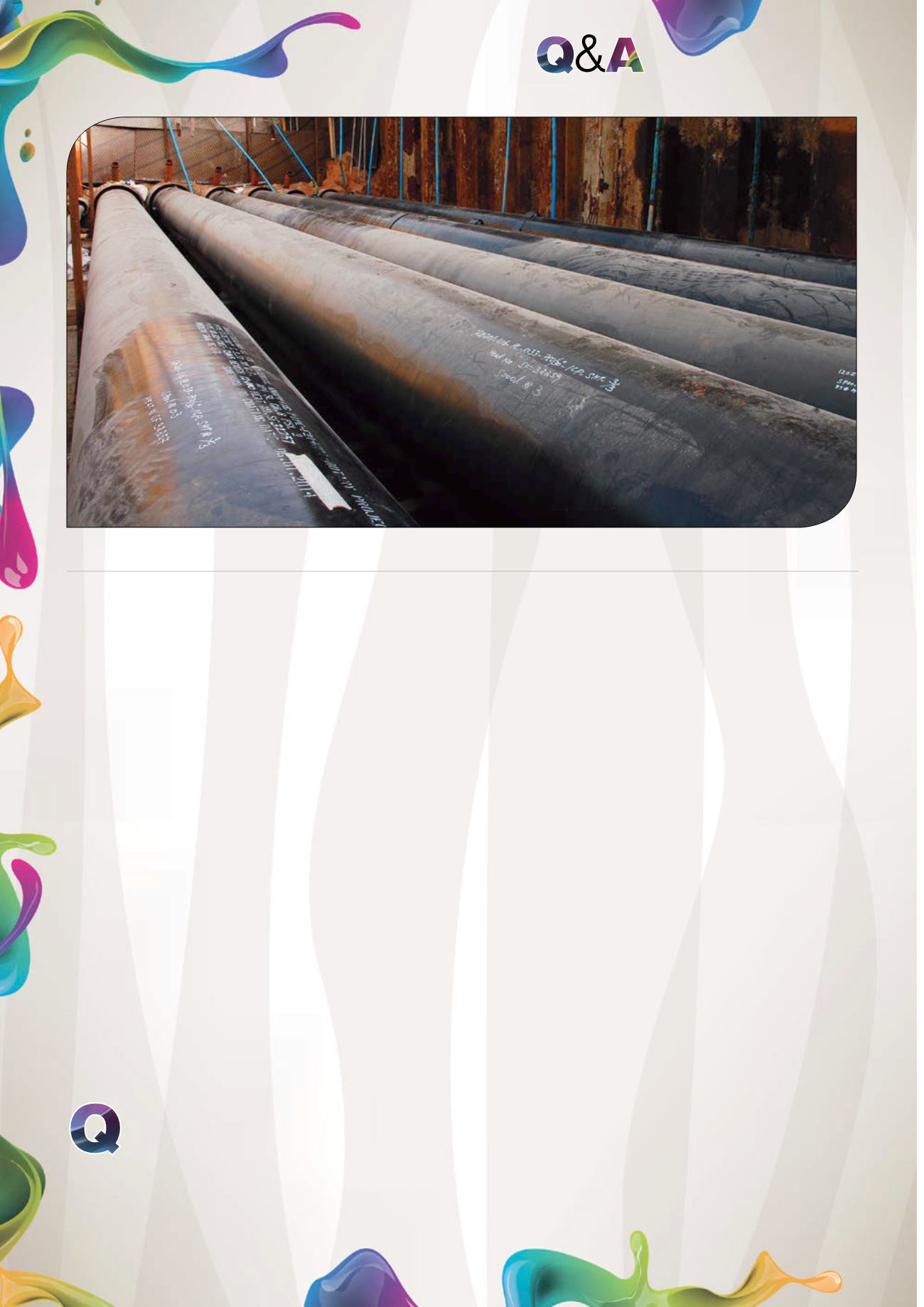
COATINGS
coatings. Finally, challenging operating conditions (HP HT)
will require exploring other type of polymeric platform, such
as nylon, PEEK or PPA to deliver high level of mechanical
performance and stability at temperatures above 140 °C.
Only a smart, integrated combination of these materials
and application will safely address the 21
st
Century energy
transportation challenges.
Cedric Oudinot, Bredero Shaw, Global Product Line
Manager, Anti-corrosion & Internal coatings
As it relates to field-applied and field joint coatings,
there will be continued and increased focus on Factory
Grade™ coatings that meet the same stringent standards as,
and that fuse to, that mainline (factory-applied) coating. This
includes injection moulded or extruded systems that use
the same material grades as the mainline coating, such as
IMPP, GTS-PP or GTS-PE for 3LPP and 3LPE coated pipelines.
Further to this, automated installation with full and real-time
customer access to key installation parameter data, using
equipment such as IntelliCOAT™, will ensure consistent and
uniform application of such Factory Grade coatings on each
and every pipeline joint in the field for these critical and
often remote pipeline construction activities.
Pascal Laferriere, Global Marketing Manager,
Canusa – CPS
Which certifications and standards
are the most helpful for the
coatings industry?
Most of the existing pipeline coating standard test methods
were originally designed for or started with onshore pipeline
applications for service/testing temperatures
≤
95 ˚C. Limited
data has been seen for service/testing temperatures of
higher than 95 ˚C for pipeline coatings. Attempts to further
develop existing standard test methods and specifications to
cover higher temperature systems often retain practices that
are no longer valid. Some specifications call for procedures
that do not have a history and no comparative data to guide
acceptance criterion. As such, there is much work needed
to understand critical factors affecting high temperature
performance of a pipeline coating and to develop a standard
test method suitable for production qualification and quality
control tests.
For example, a global survey conducted on cathodic
disbondment (CD) test practices showed that there are
broadly disparate CD test settings with the existing standard
test procedures (testing durations, reference electrode types
and uses, electrolyte temperatures and topping up/replacing
frequency, testing potentials, sample testing temperature,
and means of assessment). There are also non-standard test
procedures requested in many specifications. This study of
actual practices highlights the need for greater detail and
explanation in written test procedures or standards.
Dr. Shiwei William Guan, Vice President of
Strategic Markets and Technology – Bredero Shaw,
Asia Pacific
CSA Z245.20 is the world’s first FBE coating standard for
pipelines. Together with CSA Z662, these standards are
essential for the design and corrosion protection of pipelines
with FBE coatings. CSA Z245.20 remains the most widely used
FBE coating standard in the world.
Figure 3.
ROTARY Project, RAK – Bredero Shaw’s successful completion of its first project using the newly developed SureBond
™
100,
the latest technology breakthrough for the onshore coating industry.
60
SEPTEMBER
2014


